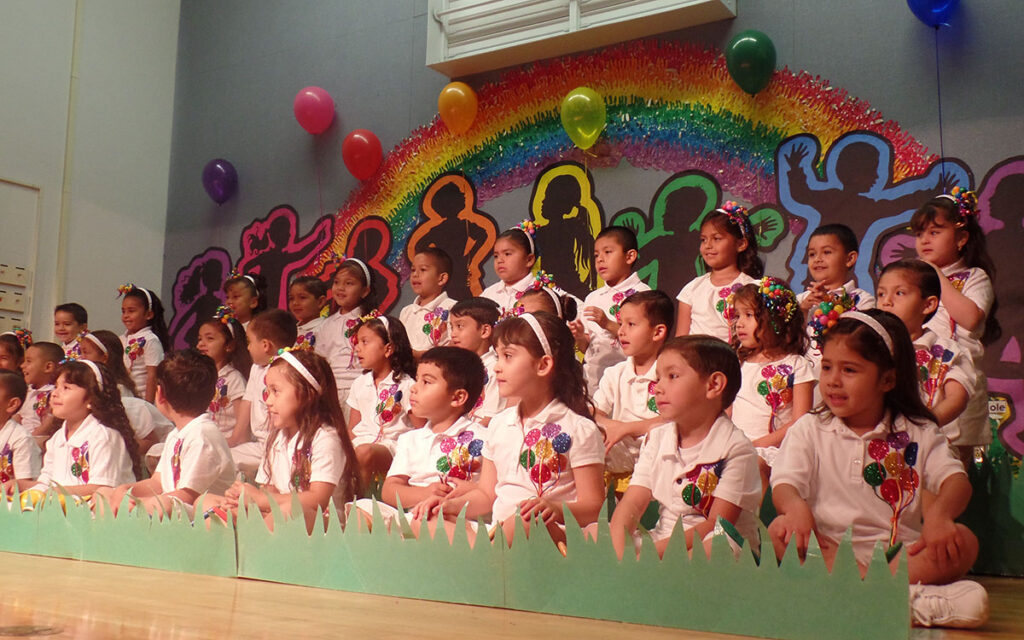 Sarah Tully, EdSource
Sarah Tully, EdSource Sarah Tully, EdSource
Sarah Tully, EdSourceFamilies encounter a big disparity in access to licensed child care spaces depending on where they live in Los Angeles County, with the largest shortage in low-income communities, a new study shows.
A report from the Advancement Project found that there are spots for just 2.4 percent of infants and toddlers and about 41.3 percent of preschool-aged children in licensed centers in Los Angeles County, California’s most populous county. The number of spaces varied widely by community, but the shortage was greater among areas with low-income, Latino and African-American families.
“We know the kids who don’t have an opportunity to prepare themselves for kindergarten tend to start the K-12 schools behind and we know they tend to stay behind,” said Kim Pattillo Brownson, director of educational equity at the Advancement Project. “It sets up what is potentially one of the bigger problems facing our schools: That we’re going to have a generation held to very high standards without the opportunity to actually get ready.”
The report, The Early Care and Education Landscape in Los Angeles County: Access, Workforce and Quality, was released last week by the Advancement Project, a civil rights organization. First 5 LA funded the report for the county, which has about 650,000 children ages 0 to 5.
A link on the report’s website has an interactive map to compare the number of spaces per capita by zip code.
Researchers looked at U.S. Census numbers for young children adjusted for 2012 and compared them to the capacity of licensed centers from the Los Angeles County Office of Child Care and California Community Licensing Division in 2013, said Chris Ringewald, the project’s research manager.
The licensed center numbers were broken down by the age of children served. But the specific ages served by licensed day care centers run in homes were unavailable, Ringewald said. Researchers anticipated that the center numbers would be smaller for ages 0 to 2 – an age when many babies are cared for at home.
“We were still surprised to see how low the access was for infants and toddlers,” Ringewald said.
Children in the welfare system are eligible for priority seats in public early children programs, yet only 12.8 percent of those children were in public programs.
The disparity between communities varied dramatically. In some areas, there were as few as one licensed seat per 100 children. Other areas had more seats than children living there: 482 seats per 100 children. Pattillo Brownson said many families are unable to drive far for child care.
“Tools like these are essential to help policy makers understand the overall need for investment in early care and education, and the significant access gaps confronting families across L.A. County,” said Peter Barth, First 5 LA director for policy and intergovernmental affairs, in a statement. “This report outlines how difficult it is for families to access quality early care and education in L.A. County and highlights the need for our government decision makers to prioritize the development of a strong and sustainable early learning system.”
To get more reports like this one, click here to sign up for EdSource’s no-cost daily email on latest developments in education.














Comments
Comments Policy
We welcome your comments. All comments are moderated for civility, relevance and other considerations. Click here for EdSource's Comments Policy.